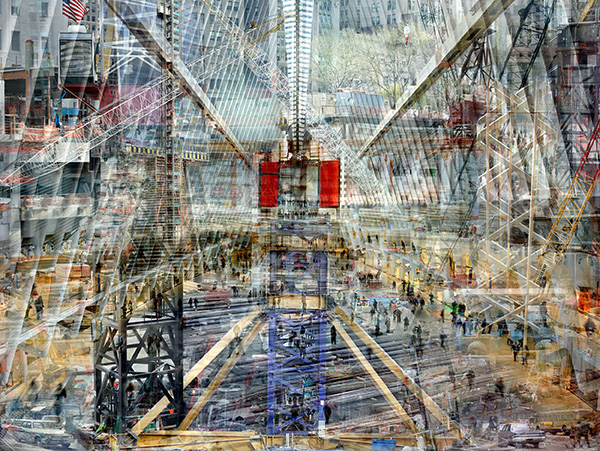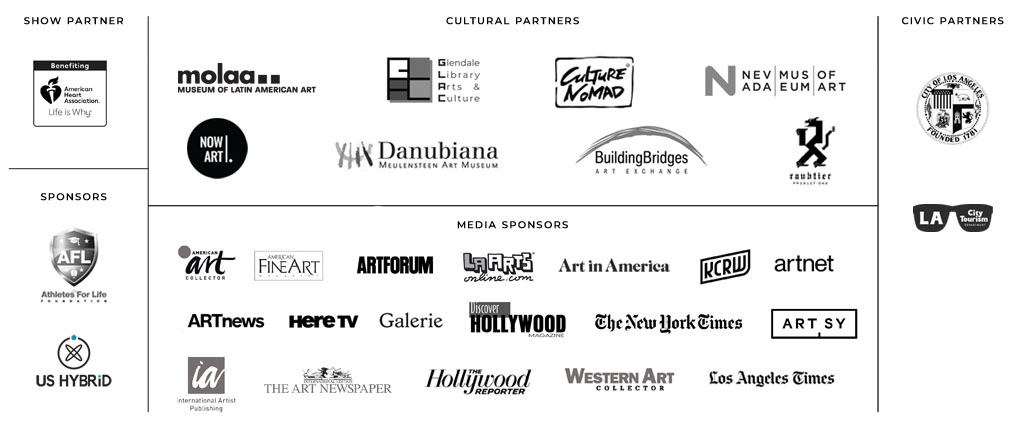W.T.C: Concrete Abstract I Shai Kremer
Presented by Art Bond
Booth 339
Presented by Art Bond
Booth 339
For younger Americans born after the attacks, 9/11 is not a memory lived, but history learned. Twenty years later, we remember those who were killed, as we honor the service and sacrifice of the brave first responders who ran toward danger to save others. By showing this body of work, we want to encourage reflection and help ensure that a new generation learns how, together, we met unimaginable tragedy and unfathomable loss with hope, resilience, and unity.
An evocation of site, a remembrance of tragedy, a progression towards healing – Shai Kremer’s Concrete Abstract series at once aims for individual and universal response to the destruction and rebuilding of the World Trade Towers following September 11th, 2001. Kremer describes his Concrete Abstract series as a means to “pay homage to America, to New York, to their trauma and their recovery.” The artist evokes the renovations and rebuilding of a once devastated sight as representative of a fresh start and ongoing therapeutic process for New York City.
Like his past series, Kremer maintains “a post-traumatic gaze to the cityscape of Manhattan – and by extrapolation, to the sociological landscape of America.”
Kremer combined copious images to illustrate the site’s former self as well as its years of reconstruction. In the most recent works *The Tribute in Light*, a memorial installation of 88 searchlights forming two columns of light in place of the towers, brings new life to the hopeful images. The strength of the façade of the Freedom Tower is a testament to how far we have come in the rebuilding process. Kremer records a compelling interpretation, in which a process linking “accumulation, destruction, and reconstruction” become “the paradigm of modernity.” The zenith of that modernity, the now tallest building in the United States, is a proud symbol of our strength.
As an Israeli, Kremer has always been invested in the political tensions in Israel – an awareness that has left an indelible stamp in his artistic production. Born in Israel but living in New York for decades, he received his MFA from the School of Visual Arts. His work has been exhibited widely, including Blue Sky Gallery, Portland, Houston Center for Photography, the Israel Museum, The Tate Modern, the Walker Art Center and many others.
Kremer’s work is in numerous public collections including The Metropolitan Museum of Art, Museum of Fine Arts, Houston, the San Francisco Museum of Modern Art, the Tel Aviv Museum of Art, Bowdoin College, the Schwartz Art Collection at the Harvard School of Business and the Rose Museum at Brandeis University.
Excerpts from a text by Gigliola Foschi – Curator
“In Kremer’s images, different points of view gather and amalgamate, fold in layers, repetitions of past and future intertwine. Imbued with time and memories, the works of the series Concrete Abstract are the result of a long process of work, born with the documentation of the reconstruction of the World Trade Center’s site, where the Twin Towers collapsed tragically in September 2001. Each image, in fact, contains over 60 overlapped photos, which were taken by the author over time and combined, day after day, preserving the overall power of details. Thanks to this operation – where the durability and the strength of memory stand against the mere flow of events destined to oblivion – his works look like a restless device, stretched between centrifugal and centripetal impulses, between chaos and order, between fragmentation and structuring of space. Like nets, like an invisible suspended maze, his images may remind us of “pictorial dynamism” and the dynamic tension which is typical of the Futurists. With Kremer, however, the vitality and the polyphonic simultaneity, found in the works of the Futurists, turn into an impersonal machine, which is powerful, dramatic and lacking univocal directions at the very same time.
The city does not grow towards a bright future anymore (like in the famous work by Umberto Boccioni), but struggles through destruction, accumulation and continuous reconstruction. After having investigated the debris and the ruins, both ancient and contemporary, which painfully mark the Israeli landscape (like in his previous work Fallen Empires and Infected Landscape), Kremer creates, with Concrete Abstract, images, which become gloomy and disturbing metaphors of modernity. Based on shared presence and interferences, on correspondences, on multiple meanings, his works fight against the logic of fundamentalism from inside, since it is based on a sole truth, on a purity lacking any mix up, on a rigid and indisputable division between right and wrong, true and false. Reality is not univocal – as we are reminded through the works of Kremer – but it is an intertwining of many different truths and points of view.”
An evocation of site, a remembrance of tragedy, a progression towards healing – Shai Kremer’s Concrete Abstract series at once aims for individual and universal response to the destruction and rebuilding of the World Trade Towers following September 11th, 2001. Kremer describes his Concrete Abstract series as a means to “pay homage to America, to New York, to their trauma and their recovery.” The artist evokes the renovations and rebuilding of a once devastated sight as representative of a fresh start and ongoing therapeutic process for New York City.
Like his past series, Kremer maintains “a post-traumatic gaze to the cityscape of Manhattan – and by extrapolation, to the sociological landscape of America.”
Kremer combined copious images to illustrate the site’s former self as well as its years of reconstruction. In the most recent works *The Tribute in Light*, a memorial installation of 88 searchlights forming two columns of light in place of the towers, brings new life to the hopeful images. The strength of the façade of the Freedom Tower is a testament to how far we have come in the rebuilding process. Kremer records a compelling interpretation, in which a process linking “accumulation, destruction, and reconstruction” become “the paradigm of modernity.” The zenith of that modernity, the now tallest building in the United States, is a proud symbol of our strength.
As an Israeli, Kremer has always been invested in the political tensions in Israel – an awareness that has left an indelible stamp in his artistic production. Born in Israel but living in New York for decades, he received his MFA from the School of Visual Arts. His work has been exhibited widely, including Blue Sky Gallery, Portland, Houston Center for Photography, the Israel Museum, The Tate Modern, the Walker Art Center and many others.
Kremer’s work is in numerous public collections including The Metropolitan Museum of Art, Museum of Fine Arts, Houston, the San Francisco Museum of Modern Art, the Tel Aviv Museum of Art, Bowdoin College, the Schwartz Art Collection at the Harvard School of Business and the Rose Museum at Brandeis University.
Excerpts from a text by Gigliola Foschi – Curator
“In Kremer’s images, different points of view gather and amalgamate, fold in layers, repetitions of past and future intertwine. Imbued with time and memories, the works of the series Concrete Abstract are the result of a long process of work, born with the documentation of the reconstruction of the World Trade Center’s site, where the Twin Towers collapsed tragically in September 2001. Each image, in fact, contains over 60 overlapped photos, which were taken by the author over time and combined, day after day, preserving the overall power of details. Thanks to this operation – where the durability and the strength of memory stand against the mere flow of events destined to oblivion – his works look like a restless device, stretched between centrifugal and centripetal impulses, between chaos and order, between fragmentation and structuring of space. Like nets, like an invisible suspended maze, his images may remind us of “pictorial dynamism” and the dynamic tension which is typical of the Futurists. With Kremer, however, the vitality and the polyphonic simultaneity, found in the works of the Futurists, turn into an impersonal machine, which is powerful, dramatic and lacking univocal directions at the very same time.
The city does not grow towards a bright future anymore (like in the famous work by Umberto Boccioni), but struggles through destruction, accumulation and continuous reconstruction. After having investigated the debris and the ruins, both ancient and contemporary, which painfully mark the Israeli landscape (like in his previous work Fallen Empires and Infected Landscape), Kremer creates, with Concrete Abstract, images, which become gloomy and disturbing metaphors of modernity. Based on shared presence and interferences, on correspondences, on multiple meanings, his works fight against the logic of fundamentalism from inside, since it is based on a sole truth, on a purity lacking any mix up, on a rigid and indisputable division between right and wrong, true and false. Reality is not univocal – as we are reminded through the works of Kremer – but it is an intertwining of many different truths and points of view.”
Back


